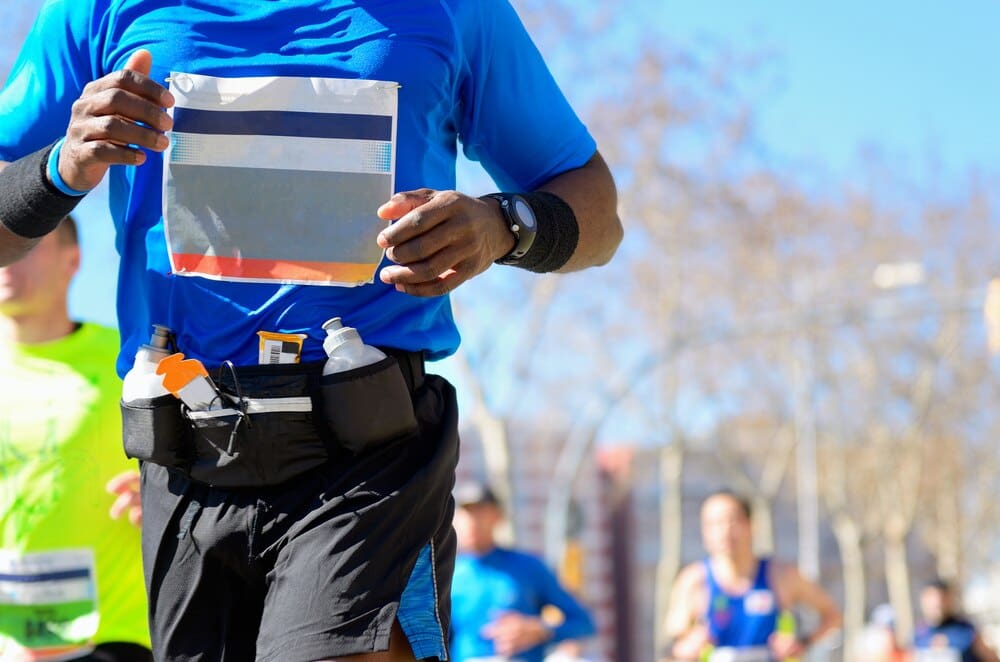For dedicated runners, completing a marathon is a monumental achievement, but for a select global community, the ultimate quest is the Abbott World Marathon Majors Six Star Challenge. This prestigious endeavor requires runners to complete the world’s six most renowned marathons: Tokyo, Boston, London, Berlin, Chicago, and New York City. For athletes training under the relentless sun and humidity of Miami, this journey presents a unique set of challenges and surprising advantages. Embarking on this multi-year quest is more than a test of endurance; it’s a global tour of iconic cities, a commitment to unwavering discipline, and the pursuit of one of the most coveted medals in all of amateur sport.
What is the Abbott World Marathon Majors Six Star Challenge?
The Abbott World Marathon Majors (AbbottWMM) is a series comprised of six of the largest and most celebrated marathons on the planet. Officially formed in 2006, the series aims to advance the sport, celebrate elite athletes, and elevate the experience for everyday runners.
At its heart for age-group athletes is the Six Star Challenge. The goal is simple in concept but immense in execution: finish all six marathons. It doesn’t matter how fast you run them or in what order, only that you cross each finish line.
Upon completing the sixth and final race in the series, runners are awarded the magnificent Six Star Medal. This oversized, impressive piece of hardware connects six individual discs, each representing one of the host cities. More than just a medal, it signifies entry into the Six Star Finisher Hall of Fame, a digital directory celebrating the thousands of runners who have achieved this remarkable feat.
This challenge transforms the solitary act of running into a long-term, global adventure. It requires patience, strategic planning, financial commitment, and a deep well of resilience, making its completion a true pinnacle of a runner’s life.
The Six Stars: A Marathon-by-Marathon Breakdown
Each of the six marathons offers a distinct personality, course profile, and entry challenge. Understanding the nuances of each is the first step in planning your journey.
Tokyo Marathon
Held in late February or early March, the Tokyo Marathon is often the final star for many runners due to its challenging entry process. The course is a relatively flat and fast tour of the city’s incredible landscape, blending modern skyscrapers with ancient temples. The organization is impeccable, and the experience is a cultural immersion, with famously enthusiastic volunteers and a uniquely respectful crowd.
Getting in is the primary hurdle. The general lottery has incredibly low odds of success. Most international runners gain entry through official tour operators or by fundraising for a designated charity.
Boston Marathon
Taking place on Patriots’ Day, the third Monday in April, Boston is the world’s oldest annual marathon and arguably the most prestigious. It is the only Major that requires most of its participants to achieve a stringent qualifying time based on their age and gender. The course itself is a net downhill point-to-point route from Hopkinton to Boylston Street, but it is infamous for its punishing hills in Newton, culminating in the legendary Heartbreak Hill.
For runners who don’t meet the time standard, a very small number of bibs are available through charity fundraising. Earning a spot on the Boston start line is a badge of honor for any serious runner.
TCS London Marathon
Typically held in April, the London Marathon is a massive celebration of running that winds through the historic streets of the city. The course is predominantly flat and known for its deafening crowd support, which carries runners past iconic landmarks like the Tower Bridge and toward the majestic finish in front of Buckingham Palace. The atmosphere is electric and carnival-like, making it a favorite for many.
Like Tokyo, London’s international ballot is exceedingly difficult to win. The most common paths for non-UK residents are through tour operators or the extensive charity partner program, which requires a significant fundraising commitment.
BMW Berlin Marathon
If you want to run a personal best, Berlin is the place to do it. Held in late September, this course is pancake-flat, wide, and famously fast—it’s where the last several men’s world records have been set. The race takes you through a unified city, culminating in a breathtaking finish through the historic Brandenburg Gate. The weather is often cool and ideal for running, making it a target race for those chasing a specific time.
Entry is primarily via a lottery, though the odds are better than in Tokyo or London. A limited number of spots are also available for fast runners who meet time standards, as well as through tour operators and charities.
Bank of America Chicago Marathon
Scheduled for early October, the Chicago Marathon offers a flat, fast course that tours 29 of the city’s diverse neighborhoods. The grid-like layout and lack of significant hills make it another prime destination for setting a personal record. The crowd support is fantastic and reflects the city’s friendly, Midwestern spirit. Logistically, it’s one of the easiest races for spectators to navigate.
Chicago is considered one of the more accessible Majors. Entry is available through a non-guaranteed lottery, a guaranteed time qualification that is more generous than Boston’s, or a robust charity program.
TCS New York City Marathon
The world’s largest marathon takes place on the first Sunday in November. The NYC Marathon is not a race you run for a fast time; it’s a race you run for the experience. The course is a challenging but exhilarating tour of all five boroughs, starting on the Verrazzano-Narrows Bridge and finishing in Central Park. The energy from the two million spectators who line the streets is unparalleled in the running world.
Entry is managed through a large lottery, time qualification standards, and a massive charity partner program. It’s a bucket-list race for runners worldwide, delivering an unforgettable journey through the heart of the city.
The Miami Runner’s Advantage: Training in the Tropics
While training for a marathon in Miami’s heat and humidity can feel brutal, it provides a powerful physiological advantage when you travel to cooler race climates.
Leveraging Heat and Humidity
Consistently training in hot conditions forces your body to adapt in remarkable ways. This process, known as heat acclimatization, increases your blood plasma volume, which allows your cardiovascular system to transport oxygen more efficiently. Your body also becomes better at regulating its core temperature through earlier and more profuse sweating.
When you arrive at a race in Berlin or Boston where the temperature is a crisp 50°F (10°C), your heat-adapted body operates with incredible efficiency. The effort level feels significantly lower, giving you a distinct performance edge over those who trained in milder weather.
Top Miami Training Grounds
To prepare, Miami runners must embrace the local landscape. The Rickenbacker Causeway is the city’s “Heartbreak Hill,” providing essential hill training for races like Boston and New York. For flat, fast miles mimicking Berlin or Chicago, the paths around South Pointe Park or the long, uninterrupted stretches of the Venetian Causeway are ideal.
Hydration and electrolyte management are non-negotiable. Miami runners learn early to carry water and supplement with electrolytes on every long run. This discipline translates directly to better race-day fueling, no matter the weather.
Managing the Climate Shock
The biggest challenge is going from Miami’s warmth to a cold start line. Pack layers you can discard, such as a cheap sweatshirt and gloves. A proper warm-up becomes critical in the cold to get your muscles ready and avoid injury. Don’t underestimate the cold; what feels refreshing for a mile can become dangerously chilly over 26.2 of them.
Strategizing Your Six Star Quest
Achieving the Six Star medal is a marathon, not a sprint. It requires a thoughtful, multi-year strategy.
Paths to the Start Line
You have four primary ways to gain entry into the Majors:
Lottery: This is a game of chance. The cost to enter is low, but so are the odds. It’s always worth a try, but don’t count on it as your sole strategy.
Charity Bibs: This is a guaranteed path that gives back to the community. It requires a commitment to raise a substantial amount of money (often several thousand dollars), so choose a cause you are passionate about.
Time Qualification: If you are a fast runner, this is your most direct route into Boston, Chicago, Berlin, and New York. Check each race’s website for the current standards for your age group.
Tour Operators: This is the most expensive but most certain option. You purchase a package that includes a guaranteed race entry along with flights and/or accommodation. It removes the stress of uncertainty for international races like Tokyo and London.
Budgeting for Your Dream
The Six Star journey is a significant financial investment. Costs include race entry fees, international flights, accommodation (which is often inflated on race weekends), food, and new gear. A single international marathon can easily cost $3,000-$5,000 or more. Plan ahead, create a dedicated savings account, and be realistic about the timeline.
Which Race First?
A smart strategy is to start with one of the domestic, easier-to-enter marathons like Chicago. This allows you to experience a Major without the added complexity of international travel. From there, you can target New York, pursue a Boston qualifying time, and enter the lotteries for the international races. Saving Tokyo or London for later in your journey is common due to their entry difficulty.
The Finish Line and Beyond
The quest for the Six Star medal is an extraordinary commitment that will take you across the globe and push the limits of your endurance. It is a journey defined by discipline, resilience, and the incredible communities you’ll discover in each city. For the Miami runner, it begins by conquering the heat and hills at home, building a foundation of strength that will carry you through any challenge. When you finally receive that Six Star medal, you’ll hold more than just metal; you’ll hold the story of a life-changing adventure, one mile at a time.







